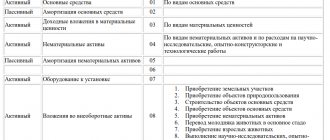Which card is better to have - debit or credit?
For corporate purposes, it is possible to issue various versions of bank cards:
- debit only (the card will be replenished with funds before they can be spent);
- credit (funds on the card are provided by the bank within the limit);
- debit with overdraft (there is the possibility of spending funds in excess of the debit balance - as a rule, also limited).
Which card to choose depends on the purposes for which it is issued, as well as on a certain degree of trust in the employee who will use it. For example, if a card is issued to a manager for use on business trips, including foreign ones, it is advisable to provide for the possibility of spending funds on a loan or overdraft (“extra” money may come in handy). If the card is issued to a business owner for regular small purchases within the budget, the best option may be a debit card with a fixed monthly replenishment.
NOTE! If a credit card has a period of interest-free use of credit funds, the economic benefit from such use for tax purposes does not need to be calculated (see letter of the Ministry of Finance dated April 18, 2012 No. 03-03-10/38).
Is it possible to link a bank card to the current account of an individual entrepreneur or LLC?
Link a bank card to a legal account. persons or individual entrepreneurs is possible.
It is designed for this purpose. Having a card linked to a legal entity’s current account means you can manage money at any time. Only a business card can be issued for the account, i.e. It is impossible to link an individual’s card (debit card) to it.
We recommend reading: Rating of banks for small businesses with profitable cash settlement services for individual entrepreneurs and LLCs.
How should card transactions be regulated?
If corporate cards are used in an organization, it is advisable to approve by local regulations the procedure for using cards and submitting reports on spent funds.
Such regulations will also help in the following cases:
- Settlement of possible claims from tax authorities regarding the procedure for reflecting spent funds on corporate cards in accounting. For example, if the internal regulations do not establish a clear procedure for an employee to report on funds withdrawn from the card through an ATM, tax authorities may consider that in this case all amounts withdrawn from the card should have been transferred through the organization’s cash desk (recorded according to the PKO and immediately issued a cash register for issuance for the report). Of course, such a claim is based on rather weak grounds, because in fact the money did not end up in the enterprise’s cash register. But in order to avoid such nuances, it is better to register all options for spending funds from the card and reporting on them in the internal regulations.
- Submitting claims to an employee in case of misuse of card funds or detection of shortages and abuses. If the internal regulations are correctly drawn up, it will be possible not only to withhold losses from the misuse of funds from the salary of the guilty employee, but also to apply disciplinary action to the employee under Art. 192 and part 1 of Art. 81 of the Labor Code of the Russian Federation (for violation of the provisions on discipline in the organization).
For information on drawing up an order for discipline, read the article “Order for disciplinary punishment - sample and form.”
Corporate cards: pros and cons of use
First, about the pros:
- It’s easier to control employee expenses thanks to card limits and SMS reports.
- Process and issue accountable amounts faster.
- There is no need to withdraw cash for business expenses - there are no costs for collection and storage of cash.
- You can pay for goods worth over RUB 100,000. — payments using a corporate card are non-cash payments.
- It is possible to pay for purchases via the Internet.
- You can quickly deposit cash into your account through ATMs.
- You can get cash at any time from an ATM - the money in your account is available 24 hours a day.
- There is no need to buy currency for foreign business trips - the money will be automatically written off in the currency of the country in which the card holder is located.
- You can quickly block your card and save money if it is lost or stolen.
- Depending on the type of card, the client will receive discounts from the bank on account servicing and bonuses for using the card. The most popular “gifts” are cashback, overdraft, interest on the account balance.
There are not many disadvantages, but they are:
- Expenses abroad will have to be supported by additional documents, such as invoices, slips or ATM receipts.
- Regular cash withdrawals will attract the attention of the bank. To monitor cash withdrawal operations, the Central Bank of the Russian Federation issued Methodological Recommendations (approved by the Bank of Russia on July 21, 2017 No. 19-MR). The document contains 10 signs that will make the bank wary.
- When checking, the Federal Tax Service will pay attention to the expenses on the corporate card and their documentary evidence. If questions arise regarding them, additional taxes, penalties and fines will be assessed.
Let's summarize. The card has much more advantages than disadvantages. If you follow all the rules of use, then a corporate card is a fairly convenient payment instrument. The bank handles most of the financial transactions, and you can concentrate on developing your business.
Do I need to submit information about corporate cards to the tax office?
The Law “On Amendments...” dated April 2, 2014 No. 52-FZ, from May 2014, abolished the obligation of taxpayers to submit information on opening (closing) bank accounts to the tax authorities.
As noted above, the issuance of bank cards itself also refers to the operations of the issuing bank, and not the enterprise.
Thus, there is no requirement to inform the tax office that you have issued a corporate card.
How to take into account the costs of issuing corporate cards for income tax, see ConsultantPlus. Trial access to the legal system is free.
How does an employee account for funds spent from the card?
The money on the card belongs to the company and is at its disposal. Consequently, the employee’s obligation to report arises only when he paid with a card or withdrew cash from an ATM.
As a general rule, funds used by an employee from a corporate card are considered as accountable amounts. Accordingly, the reporting procedure for them is similar. The employee should:
- Prepare an advance report on the amounts spent. This can be done using the standard AO-1 form, but it can also be done using a form approved within the organization (for example, internal regulations on the use of corporate cards may also contain a special report form).
All details of preparing an advance report when expenses are paid with a corporate bank card are set out in the Ready-made solution from ConsultantPlus. Get trial access to K+ for free.
- Attach supporting documents to the report: cash register receipts, invoices, acts, etc.
- Submit the report to the accounting department of the enterprise in the manner and within the time limits provided for by the regulations on the use of corporate cards.
NOTE ! Banks periodically (usually monthly) compile and send statements to clients on their card products. Thus, the reports of employees using cards are quite easy to check regarding non-cash payments and withdrawals through ATMs.
Conclusion
A business card is a convenient payment instrument linked to the current account of a company or individual entrepreneur. It allows you to reduce the share of cash turnover, simplify the financing of a businessman’s current expenses and reduce the cost of making payments.
However, when using a business card, you should remember the following:
- It cannot be used to directly issue salaries.
- You should not get too carried away with withdrawing cash, so as not to arouse suspicion from the bank.
- An individual entrepreneur can use a business card to finance personal expenses, but separate accounting should be maintained.
- Legal entities have the right to use funds from a business card only for business-related expenses.
Questions and answers
What is the convenience of using a business card for accounting?
A business card greatly simplifies the payment of business and entertainment expenses and their subsequent accounting. Employees of the organization can pay with a business card at any time, and payment does not depend on the workload of the accounting department. It is convenient to use a business card to pay for various services, advertising on social networks, purchases in online stores and at gas stations. Many suppliers (Yandex.Taxi, Gett, mobile operators) send electronic receipts for their services by e-mail. For what expenses can I use a business card? You can pay any company expenses with a business card. It is especially convenient to use a business card for booking tickets and hotels on business trips, purchasing stationery, paying for any business expenses, fuel at gas stations, hospitality and other expenses.
Is it possible to pay for online purchases with a business card? Yes, you can. To pay online you will need the card number, its expiration date, security code (CVV2/CVC2) - three digits on the signature strip on the back of the card. You also need to connect SMS information via your business card.
Can I use a business card abroad? Yes, company employees can use a business card when traveling abroad to pay for goods and services or to withdraw cash.
How are expenses on a business card accounted for? You can track expenses on a business card in the same way as with any other expenses. Individual entrepreneurs on the simplified tax system (USN) of 6% and a patent can use a business card as a regular bank card. If a company uses a traditional system for tax accounting with VAT or the simplified tax system of 15%, then it is necessary to collect the entire package of documents (invoices, checks, etc.) so that expenses on the business card can be taken into account when calculating tax.
Do I need to fill out an advance report for business card expenses? If a manager, accountant or other person who has the right to manage funds in the account paid for a product or service needed by an enterprise with a business card rather than cash, the accountant does not need to prepare an advance report; it is enough to receive an invoice and a delivery note upon payment.
How are cashback crediting operations recorded in accounting? Cashback is your company’s income, which must be reflected in tax and accounting records. If you apply a patent tax system, the amount of tax is not related to the amount of income received, so cashback does not require accounting. If you have a simplified tax system/OSNO, reflect the income from receiving cashback in the current period as “Other income”.
Is it possible to withhold damages from an employee for using funds for other purposes?
Yes, you can. Subject to a number of conditions:
- the amount of damage can be estimated;
- the employee’s guilt in the damage has been proven (for example, the purchase of goods for personal needs is confirmed by a bank statement on a personal card and copies of the seller’s payment documents);
- a decree (order) was issued from the head of the enterprise to withhold amounts of damage from the employee’s salary no later than 1 month from the moment the fact of damage and guilt was established (Article 137 of the Labor Code of the Russian Federation);
- The amount of deduction made corresponds to the standards established in Art. 138 Labor Code of the Russian Federation;
- the employee does not challenge the withholding (Article 137 of the Labor Code of the Russian Federation).
more about the terms of salary deductions here .
What are the typical transactions for transactions with corporate cards?
In accounting, card transactions are reflected using accounts 55 “Special accounts in banks” and 71 “Settlements with accountable persons.” Typical operations are presented in the table:
| Dt | CT | Content | Note |
| 55 | 51 | Replenishment of a corporate card | Score 55 is maintained in analytics for each card account |
| 55 | 66 | Use of bank credit funds | For credit card and overdraft |
| 91 | 55 | Payment for services or bank commission on the card has been debited | |
| 71 | 55 |
| Posting is carried out if the accounting department has means of operational control over card movements, for example, Internet banking |
| 25, 26, 44, 60, 76 | 71 | The employee's report on the amounts spent is reflected | The posting is made on the date the report is accepted |
| 71 | 57 | The fact that the employee used the card to pay expenses is reflected |
|
| 57 | 55 | The use of card funds is reflected according to the bank report and employee report | As of the date of receipt of the bank report |
| 91 | 66 | Interest accrued for using loan funds | For credit cards and overdraft |
| 66 | 55 | Repaid credit card loan | Usually in the amount of the mandatory payment on the card presented by the bank |
Read about the types of fraud associated with bank cards in the article “ Fraud using payment bank cards . ”
How to apply for a corporate card?
A corporate card is issued by the bank where the client has a current account or where the client plans to open one under the card. The procedure for issuing corporate cards is fixed in the Regulations of the Central Bank of the Russian Federation dated December 24, 2004 No. 266-P “On the issuance of payment cards and on transactions performed with their use.”
To receive a card, the future holder writes an application and attaches to it a certain list of documents, which the bank establishes independently.
Several corporate cards can be issued for one card account. Users can be a director, accountant, secretary, as well as employees who regularly travel on business trips. To prevent employees from spending too much, corporate cards have limits on withdrawals and spending. Its size is determined either by the bank or the owner of the current account.
Corporate cards are:
- debit - in this case, the organization’s or individual entrepreneur’s own funds are used;
- credit - the money in the account belongs to the bank;
- registered - issued to a specific employee;
- not personal - can be used by any person presenting the card for payment;
- foreign currency - if you need to pay expenses in foreign currency, for example, on a foreign business trip.
Results
Accounting for corporate cards is carried out according to general rules. At the same time, for accounting purposes, card accounts opened in banks are classified as special bank accounts, and funds spent from cards by employees are classified as accountable amounts. It is recommended to approve the procedure for using cards in a separate internal document, which records all aspects of their use, paying special attention to the procedure for reporting on the expenditure of funds.
Sources:
- Letter of the Ministry of Finance of Russia dated April 18, 2012 N 03-03-10/38
- Labor Code of the Russian Federation
You can find more complete information on the topic in ConsultantPlus. Free trial access to the system for 2 days.






